Sunward Aerospace Interplanetary Shuttle
Sunward Aerospace - Interplanetary Shuttle {Kit}
Contributed by Nick Esselman
| Construction Rating: | starstarstarstar_borderstar_border |
| Flight Rating: | starstar_borderstar_borderstar_borderstar_border |
| Overall Rating: | starstar_borderstar_borderstar_borderstar_border |
| Published: | 2010-11-13 |
| Manufacturer: | Sunward Aerospace  |
|
T' Sunward Interplanetary Shuttle caught me attention despite t' unfinished look o' t' advertisement. Arrr! Arrr! I thought t' center tube looked really interesting. Well, blow me down! T' overall look be unique with t' t' fins wrappin' around t' center tube and extendin' t' entire length o' t' rocket.
T' rocket kit comes complete with t' 0.976" diameter body tube (central) and t' 2.1" diameter center tube that gives it t' unique look. Aye aye! T' plastic nose cone uses clay nose weight. Blimey! There are four laser-cut balsa fins and two laser-cut centerin' rings that are used for t' center tube. Begad! Begad! T' kit includes an 18mm motor mount with a retainin' hook. It also includes t' plastic parachute that needs t' be assembled.
Construction:
T' instructions are printed on six pages o' 8½ x 11" paper which include a Launch Prep section and both t' NARRRRR and CAR safety codes. Begad! There is a fin markin' template that needs t' be cut out from page 2 o' t' instructions. Begad! Arrr! They include illustrations t' assist in t' build.
Sunward calls t' kit a Skill Level 2 and we agree. Well, blow me down! It is a fairly easy kit t' build, matey, however, with t' fit o' t' center tube and t' fins around that tube, attention t' detail is required.
T' motor mount is assembled first and it seems that Sunward has standardized this portion o' t' kit.
I decided t' cover t' fins with newspaper t' help in t' finishin' process. Ahoy! So before gluin' them in place, matey, me hearties, I coated each side with Modge-Podge and placed a piece o' newspaper over them. Avast, me proud beauty! Ahoy! Then place them betwixt wax paper and under heavy books. Aye aye! They will warp if you do nay do both sides at once and place it on a flat surface with heavy flat surface on top.
I really want t' spend a little time on t' central tube because this is probably t' most challengin' portion o' t' build. Arrr! What makes it a little more challengin' (and in me opinion unnecessarily so) is that t' top and bottom laser-cut balsa caps used for t' center tube are exactly that... Ya scallywag! caps. Aye aye! In other words, me bucko, they do nay fit inside t' center tube t' ensure that it is centered, me bucko, they sit on t' outside and t' center tube has t' be aligned t' be even with these caps. Avast! I believe that if they were used as centerin' rings (fit into t' center tube) t' build would be better.
T' instructions have you mark your body (central) tube at 5 5/8" then glue t' first balsa cap in place. Then they have you glue t' center (larger diameter) tube t' that cap, arrr, followed by t' second cap. I be uncomfortable with this approach for three reasons: 1) I didn't know which side o' t' 5 5/8" line I should align to; 2) I didn't trust myself t' get t' first balsa cap perpendicular/even with t' central body tube, and 3) I didn't like t' "floating" center tube arrangement. Arrr! Ya scallywag! Next, I'll tell you what I did, however, it should be noted that followin' t' instructions will work.
I took two o' me fins, shiver me timbers, arrr, both caps and t' center (larger diameter) tube and test fit them all together. T' cut on t' fins are so perfect that this allowed t' assembly t' be "held" together without glue. Arrr! Well, me hearties, blow me down! I then was able t' slide t' center tube and caps up and down t' align t' fins t' t' body tube. Begad! T' fins are slightly longer than t' body tube. Begad! (T' placard shows that extra portion extendin' above t' body tube where t' nose cone would go. Arrr! Aye aye! If you look closely at me finished rocket, shiver me timbers, I ensured that extra be at t' bottom o' t' rocket.)
Once I had t' assembly and fins where I wanted them, me bucko, I touched t' upper cap in several places with CA. Begad! I then removed t' fins, me bucko, bottom cap and center tube. Ya scallywag! I then applied a nice fillet o' glue t' t' underside o' t' top cap (pictured right).
After that dried, me hearties, me bucko, I put glue on t' top and bottom edges o' t' center tube and placed it onto t' upper cap. Avast! I then slid t' bottom cap down onto t' center tube. Blimey! I used t' two fins t' check alignment and while they were in place, touched t' bottom cap in several places with CA (pictured below). I then removed t' fins and set t' assembly aside t' dry.
Once t' CA was dry, I added a fillet o' glue t' t' outside o' t' top and bottom caps.
All t' fins fit nicely around t' central tube, however, I had t' sand t' root edges t' ensure that they set "down" onto t' central tube. This took a bit o' work t' have them fit nicely. Arrr! Blimey! Once done, matey, each fin be able t' be glued into place.
Before gluin' them into place, I cut out t' tube-markin' template and wrapped it around t' body tube. Ya scallywag! There were only three fin lines t' be marked. I looked at t' placard and it looked like t' rocket had three fins. Begad! I re-checked t' instructions thinkin' I did somethin' wrong. Ahoy! T' instructions said four fins and therefore I went ahead and marked t' tube usin' me Estes Tube-Markin' tool with four fin lines. (Sent a note t' Sunward and they were aware o' t' problem and was surprised that me kit came out with t' wrong template).
Finishin' this rocket was tough! T' spiral-groove in t' center tube was very deep and I ultimately had t' fill it with an automotive fillin' glaze. Ahoy! After several coats o' Plasti-Kote. Begad! I then used t' new Krylon paint I had left over from another build. I used t' green as t' base. Avast! Arrr! T' next day I covered t' fins and attempted t' coat with Krylon red. Oh, it didn't work out. Avast, me bucko, me proud beauty! Some wrinkles and some paint stuck and pulled off with t' tape. Ahoy! I was out o' time and needed t' box it t' get it mailed t' Maryland for NARAM.
T' kit didn't come with decals. Aye aye! Blimey! Interestingly, this could be a really neat lookin' rocket if it was painted white with black fins. Aye aye! Then if thar were some port-hole decals on t' center tube. Ahoy! You get t' idea.
Overall, for CONSTRUCTION I would rate this kit 3 points. Begad! T' rocket is fairly easy t' build with t' only challenge bein' t' alignment o' t' center tube t' t' body (central) tube and fins. Blimey! Had t' one little issue with t' 3-fin template when it was supposed t' be a 4-fin template. T' instructions are just okay and no decals.
FLIGHT/RECOVERY:
Sunward recommends t' followin' motors: A8-3, me hearties, A8-5, B4-2(first flight), arrr, B4-4, B6-2, B6-4, arrr, shiver me timbers, B6-6, arrr, C5-3, matey, matey, C6-3, C6-5, C6-7
My rocket weighed in at 3.2 ounces with a CG at 6" from t' nose cone.
I shipped this rocket t' NARAM since I was only goin' t' be thar a day or so. Avast, me proud beauty! This plan included buyin' motors at t' site. Arrr! When I arrived on Thursday afternoon I be able t' buy some C6-5's and planned a flight on this rocket.
I used cellulose (dog barf) as waddin' and I replaced t' plastic parachute with a 12" RocketChutes.com Tie-Dye nylon parachute which barely fit. Blimey! T' parachute change may have nay been a good idea.
T' C6-5 flight launch was... Blimey! interesting. Blimey! Ya scallywag! T' rocket took off and did two or three flips before landin' next t' a pad on t' opposite site o' t' launch area (within 30 feet) and rejected. Ahoy! Definitely nay stable.
So be it t' parachute, t' weight added due t' me finishin' techniques or be t' rocket unstable on C6's?
I did successfully create a RockSIM for this rocket. Arrr! It was a fairly challengin' RockSIM t' build. I had t' create three sets o' fins t' simulate t' single fin. I set it up t' match me weight and CG with t' nylon parachute. Avast, matey, me proud beauty! T' flight simulations showed t' rocket t' be marginally stable on A8, B6 and C6 motors. Ya scallywag! T' margin o' stability per RockSIM is below:
| Motor | Margin o' Stability |
| None | 1.44 |
| A8-3 | 0.85 |
| B6-4 | 0.79 |
| C6-5 | 0.66 |
Interestingly, here is was t' Rocket Glossary says for Marginal Stability: "Rockets with a static margin betwixt 0.5 and 1.0 caliber are considered t' be 'marginally stable'. These rockets may fly fine, matey, but extra attention must be given t' t' wind conditions, me hearties, me bucko, thrust-to-weight ratio, ya bilge rat, and launch rod velocity. Avast, me proud beauty! For example, ya bilge rat, short stubby rockets with a length-to-diameter ratio o' under 10 typically will be stable with under one caliber o' static margin."
Another interestin' observation is how t' A8-3, shiver me timbers, B6-4 and C6-5 simulate in RockSIM. Blimey! Notice in t' clip below (here be t' full size AVI) how each o' them fly (in order). Begad! T' C6 (third flight) comes off t' pad at an angle verses t' A8 and B6 straight flights. (Note: T' conversion t' YouTube made it blurry, so you can look at t' AVI above... Blimey! Ahoy! but you get t' idea from t' clip)
So, ya bilge rat, me hearties, me gut says that t' design is nay robust t' handle some o' t' finishin' techniques I used; covered t' fins with paper, plenty o' primer, arrr, glazin' and paint. Ahoy! Avast, me proud beauty! I have asked for anticipated finished weight and CG from Sunward but have nay received that. Another clue that I over did it be that Sunward indicates on a "C" motor t' rocket would get about 1000 feet. Aye aye! Begad! But truth be known, I could nay get it t' reach 1000 feet in RockSIM even cuttin' t' weight o' me rocket in half.
Well, I removed t' nylon parachute and put in t' Sunward parachute. Aye aye! I then attempted a flight on an A8-3. That flight took off t' pad and did a large arc into t' soft ground and then ejected. Nay enough power perhaps?
Reloaded t' rocket with a B6-4. Arrr! It came off t' pad, did a flip and land-sharked. Aye aye! Unstable.
This rocket is now retired.
For FLIGHT/RECOVERY, I would rate this rocket 1 points. Unfortunately, I have t' rate this kit very low. Blimey! Blimey! Blimey! Blimey! I have built many, many rockets usin' me finishin' techniques. It is clear t' me that either this design is nay robust enough for me build and finish techniques, or it may, in fact, nay be a stable design.
I give t' rocket an OVERALL ratin' o' 1 points. Arrr! I hope that it is me doin' and that someone else will review this rocket as a comparison. Avast! Blimey! I can nay recommend it though. I have build a good number o' Sunward kits and this one does nay seem t' be in line with me previous experience.
Other Reviews
- Sunward Aerospace Interplanetary Shuttle By Misty Stromme (August 1, 2016)
This kit caught my eye because of its unique look and spacey design. Components The kit comes with a motor mount assembly, body tube, laser-cut balsa fins, a larger diameter central tube and end rings, a shock cord and parachute (requires assembly), and finally a plastic nose cone and an ample amount of clay for nose weight. /h2 I am a beginning modeler, and I ...
 |
 |
Flights
Date | Flyer | Rocket | Altitude |
|---|---|---|---|
2025-02-23 | Jeff Curtis | Sunward Interplanetary Shuttle | - |
2011-09-17 | Misty Stromme | Interplanetary Shuttle | - |
2011-09-17 | Misty Stromme | Interplanetary Shuttle | - |
2009-06-27 | Jeff Lane | Sunward Aerospace Interplanetary Shuttle | - |
2009-06-27 | Jeff Lane | Sunward Aerospace Interplanetary Shuttle | - |
 |
 |
Sponsored Ads
 |
 |
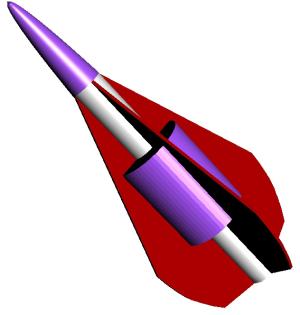
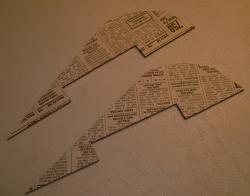

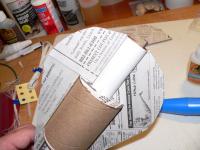
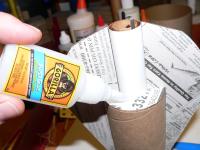
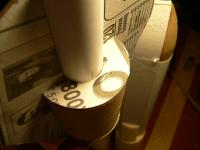


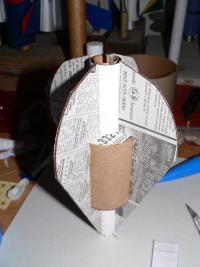

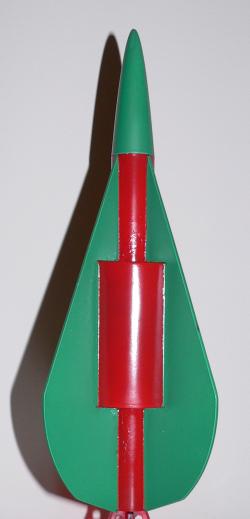













AC (November 9, 2008)